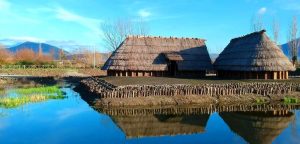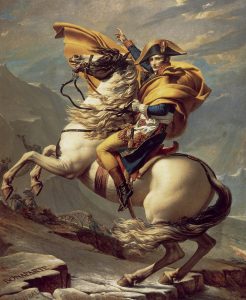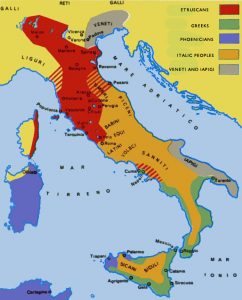
The Greek Sanctuaries can be:
- a) Intramural
- b) Periurban
- c) Extraurban
Their location was linked to methods and needs that varied from city to city and that underwent evolution over time.
Urban and Periurban Sanctuaries:
They were preferably located on the “Acropolis”, citadel built on a high hill, but also in the same “agorài” (main squares), and then along the line of fortifications, to define a sort of “sacred belt”, or, in the case of coastal cities, at the mouth of the rivers, near ports and landings.
Extraurban Sanctuaries:
The “pòlis”, from the moment of its establishment in a foreign land, in addition to carving out a large urban space clearly oversized for the needs of the first comers, subtracted from the natives and also annexed a portion of territory outside the city. This space, functional to finding food resources, was the “chòra politikè”, an essential part, together with the city, of the “polis” political institution. Therefore, exactly as in the mother country, from the beginning the colonial “pòlis” was composed of an inseparable unity between the city (àstu) and that portion of the territory directly subjected to the government of the city (chòra politiké), dotted with sanctuaries from the earliest phase and variously articulated over time. Since the first generations, the main extra-urban sanctuaries were almost never more than 10-12 km away from the city: it suggests that the size of the most ancient “chòra” allowed farmers however to reach their property (in the “chòra politiké”), to work the land and to return in city over the same day.
Chòra Politiké:
It is clear how the best portion of the “chòra” was divided and assigned to the colonists according to a very well regulated property regime, of which we also have extraordinary testimonies of an economic-juridical or cadastral nature, although much later – the Tables of Eraclea (1), the Tables of the Sanctuary of Zeus Olympios of Locri or the Alesina Table. It is equally clear how at the edge of the divided and assigned countryside there was the “eschatià”, that is a sort of no-man’s land set against the indigenous territories or a neighbouring “pòlis”.
It is important to underline that the limits of the colonial territories towards the wooded areas of the “eschatià” and those inhabited by the indigenous populations were not well defined. Along the coast, on the other hand, especially in the case of (A remove) direct proximity between two neighbouring “pòleis”, the borders had to be established more strictly, so that the historical sources refer to border conflicts, trespassing and raids in the enemy territory, similarly to as documented for the motherland. In these cases the borders were often marked by natural elements, especially rivers, also sometimes marked by the sacred.
The sacred mediated between the Greeks and the indigenous communities of the hinterland, in those very permeable areas, defined as frontiers, in which the meeting of the different cultures became more fruitful and where the interests of the indigenous aristocracies were united with those of the dominant classes of the colonial “pòleis”.
Excerpt from: Giocacchino Francesco La Torre, Sicilia e Magna Grecia, Editori Laterza, 2011, pp. 157-160
For further info about our guided tours of Pompeii and Herculaneum













